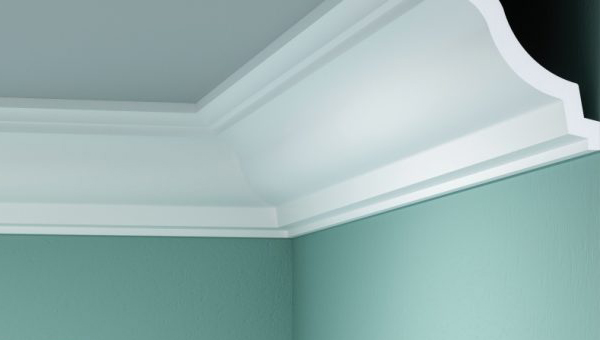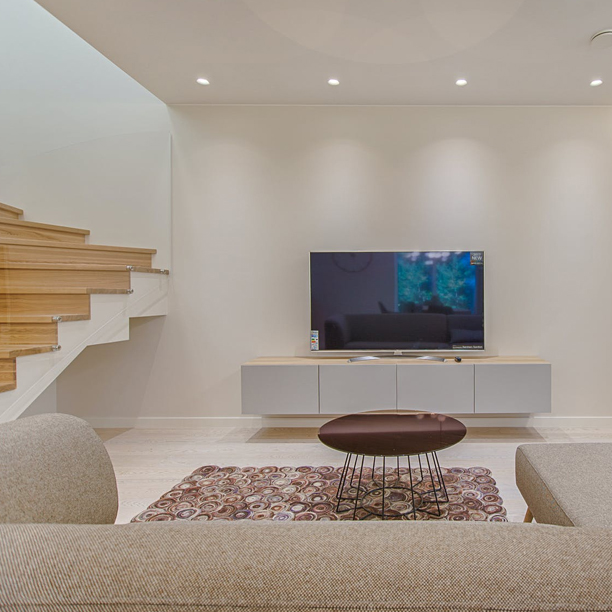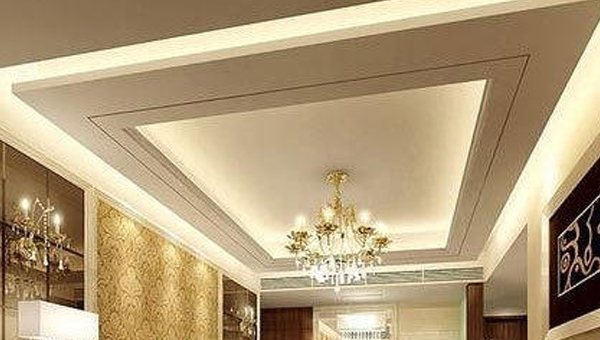
A cornice (from the Italian cornice meaning "ledge") is generally any horizontal decorative molding that crowns a building or furniture element – the cornice over a door or window, for instance, or the cornice around the top edge of a pedestal or along the top of an interior wall. A simple cornice may be formed just with a crown.


A dropped ceiling is a secondary ceiling, hung below the main (structural) ceiling. It may also be referred to as a drop ceiling, T-bar ceiling, false ceiling, suspended ceiling, grid ceiling, drop in ceiling, drop out ceiling, or ceiling tiles and is a staple of modern construction and architecture in both residential and commercial applications.
Design objectives
Effective building design requires balancing multiple objectives: aesthetics, acoustics, environmental factors, and integration with the building's infrastructure—not to mention cost of construction as well as long-term operation costs.
Aesthetics
Modern dropped ceilings were initially created to hide the building infrastructure, including piping, wiring, and/or ductwork, by creating a plenum space above the dropped ceiling, while allowing access for repairs and inspections. Drop ceilings may also be used to hide problems, such as structural damage. Further, drop out ceilings can also conceal the sprinkler systems while still providing full fire suppression functionality.
For many years, dropped ceilings were made of basic white tiles, but modern innovations now offer a plethora of options in sizes, colors, materials (including retro designs and faux leather, wood, or metal), visual effects and shapes, patterns, and textures as well as support systems and ways to access the plenum. Custom runs of specialty ceiling tiles can be done at relatively low cost compared with the past.
For many years, dropped ceilings were made of basic white tiles, but modern innovations now offer a plethora of options in sizes, colors, materials (including retro designs and faux leather, wood, or metal), visual effects and shapes, patterns, and textures as well as support systems and ways to access the plenum. Custom runs of specialty ceiling tiles can be done at relatively low cost compared with the past.
Acoustics

